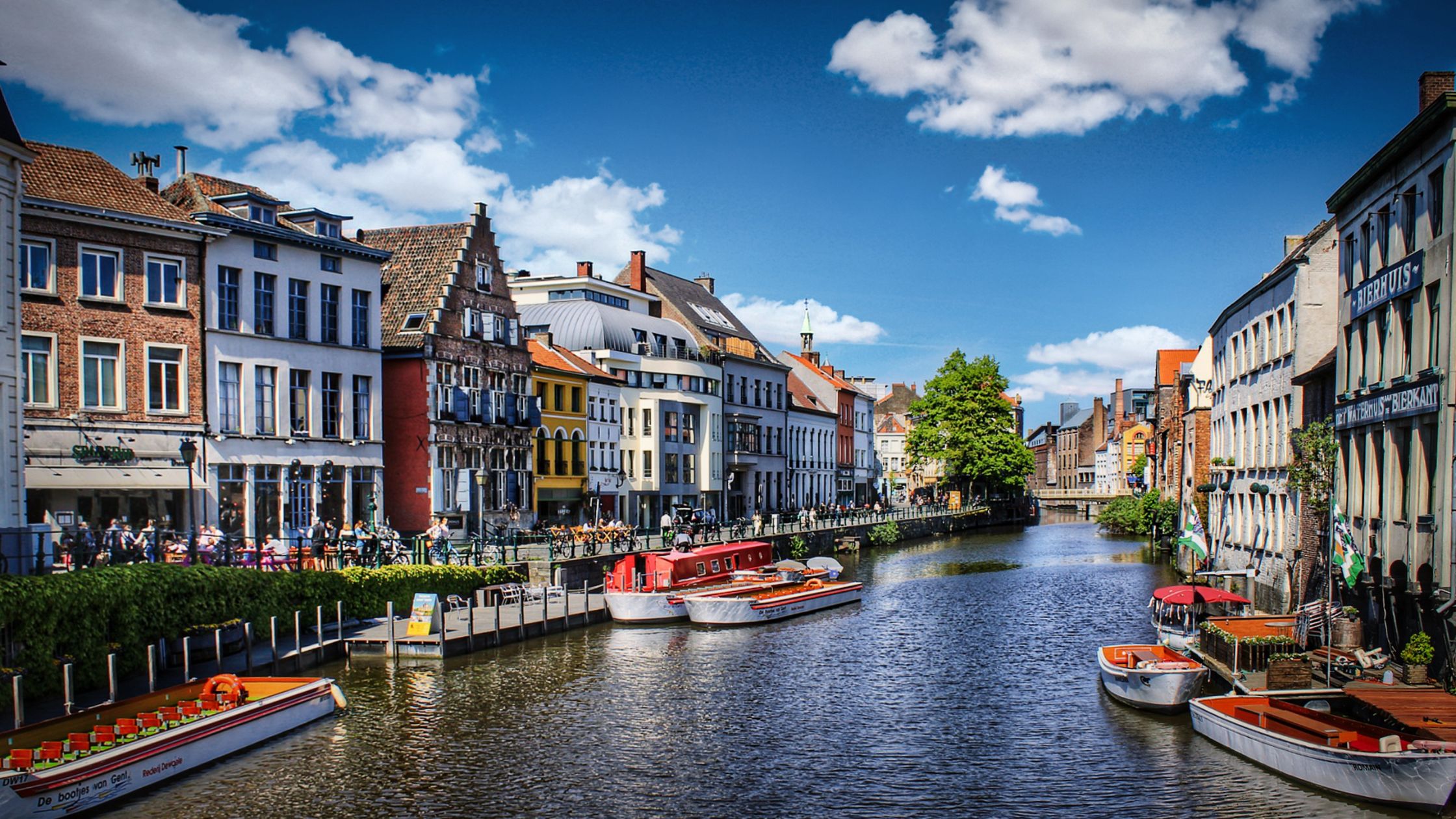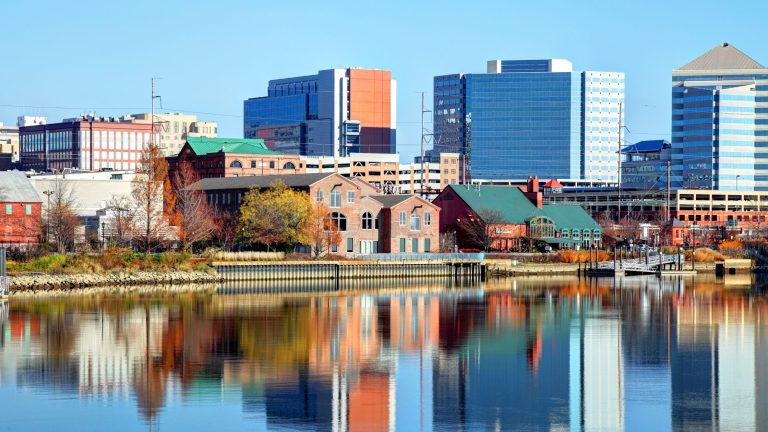When Belgium Blooms: A Seasonal Symphony of Cobblestones, Canals, and Perfect Timing
Belgium reveals itself differently with each turn of the calendar, transforming from winter’s candlelit intimacy to summer’s festival fun with the practiced grace of a Bruges lacemaker working ancient patterns into contemporary beauty.
The question isn’t whether to visit this compact kingdom where medieval spires puncture modern skylines—it’s when to align your arrival with Belgium’s shifting moods, ensuring your memories capture not just places but perfect moments: morning mist lifting from Ghent’s canals in May, Gentse Feesten revelers spilling across July squares, October light gilding the Ardennes, or December’s glühwein warming your hands as snow dusts the Grand-Place.
Understanding Belgium’s seasonal rhythms transforms good trips into amazing ones. This maritime-influenced nation, where Atlantic weather systems dance with continental patterns, creates microclimates of experience.
Each month orchestrates different symphonies: April’s shy terraces opening like flowers, September’s beer festivals celebrating harvest traditions, January’s museum halls echoing with footsteps of solitary art lovers. We’ll guide you through Belgium’s temporal tapestry, revealing when crowds thin, prices drop, festivals ignite, and nature performs its most photogenic moments.
Spring’s Awakening: When Belgium Emerges from Winter’s Embrace
April: The Tentative Renaissance
April in Belgium truly exemplifies how April showers bring May flowers. Temperatures hover between 8-15°C (46-59°F), creating perfect walking weather when the sun emerges, while brief rains polish cobblestones to a mirror-like sheen. This transitional month rewards flexible travelers with emerging beauty and manageable prices before summer’s surge.
The Zythos Beer Festival in Leuven (typically late April) transforms the historic Brabanthal into Belgium’s most comprehensive beer-tasting event, where 100 breweries pour 500 different beers for enthusiasts who plan their visits months in advance.
Art Brussels brings international galleries to Tour & Taxis, creating cultural electricity that ripples through the capital’s museums and alternative spaces. Yet April’s greatest pleasure might be simpler: watching Brussels’ parks explode into green, seeing café tables multiply along Antwerp’s Meir, or cycling Bruges’ outer canals while tourists still cluster in the center.
May: Belgium’s Golden Month
May delivers Belgium at its most photogenic, when 12-20°C (54-68°F) days stretch toward 9 PM sunsets, creating extended golden hours that transform every canal into liquid amber. The Brussels Jazz Weekend (typically late May) fills squares with free concerts where bebop mingles with beer foam, while the Eau d’Heure Lakes, south of Charleroi, awaken for the water sports season—SUP boards dotting the 600-hectare surface like scattered petals. Hotel prices remain reasonable before summer’s peak, restaurants haven’t yet adopted tourist-season urgency, and the whole country feels accessible, unhurried, magnificent.
“May is when Belgium remembers why we live here,” shares Marie Declercq, who operates canal boats in Ghent. “The light is perfect for photography, the terraces are full but not overwhelmed, and you can actually get a table at that restaurant you’ve been wanting to try. Plus, the students are still here, keeping the city young and energetic without the tourist crowds of July.”
June: The Crescendo Before Summer’s Symphony
June stretches Belgium’s comfort zone toward its summer potential, with 14-22°C (57-72°F) days that invite long lunches and evening strolls along the Scheldt. Rock Werchter (typically late June or early July) begins tuning up, drawing music fans to Flemish Brabant, while coastal towns like Knokke-Heist prepare for their summer transformation. The month offers that precious window when the weather cooperates, but schools haven’t yet released their charges—meaning you can explore Pairi Daiza zoo without navigating stroller traffic jams or find solitude at sunrise along Bruges’ Minnewater.
Summer’s Crescendo: When Belgium Celebrates Everything Simultaneously
July: The Festival Apex
July transforms Belgium into Europe’s party headquarters, where every square becomes a stage and every evening extends past midnight. Temperatures reach their annual peak at 17-24°C (63-75°F), though maritime influence prevents the crushing heat that plagues continental capitals. Gentse Feesten (July 18-27, 2025) fills Ghent with ten days of continuous entertainment—from morning puppet shows to dawn DJ sets—creating an atmosphere where medieval architecture frames contemporary celebration.
The Ommegang pageant in Brussels (typically early July) recreates Charles V’s 1549 entry into the city, with 1,400 participants in period costume transforming the Grand-Place into a Renaissance tableau. Belgian National Day on July 21st brings military parades, fireworks, and rare free admission to federal museums.
August: High Summer’s Sustained Note
August maintains July’s energy while adding unique spectacles that define Belgian summer. The biennial Flower Carpet (mid-August in even years—next in 2026) transforms Brussels’ Grand-Place into a 1,800-square-meter begonia tapestry, with patterns changing each edition to reflect contemporary themes or historical anniversaries. The Belgian Grand Prix at Spa-Francorchamps draws Formula 1’s circus to the Ardennes, filling every hotel room within 100 kilometers and transforming sleepy spa towns into temporary racing capitals.
Coastal destinations reach their zenith in August, when water temperatures at Ostend and De Haan achieve their swimmable peak of 18°C (64°F)—admittedly brisk by Mediterranean standards but refreshing after a day building sandcastles. The coast tram, connecting all Belgian beaches across 67 kilometers, becomes a moving party where day-trippers with beach bags mingle with evening revelers heading to waterfront clubs.
What Is the Best Weather Window for Belgium Travel?
The sweet spot for Belgian weather arrives in late May through June and returns in September through early October, when temperatures stabilize between 15-22°C (59-72°F) and rainfall drops to its annual minimum. These periods deliver what locals call “terrace weather”—warm enough for outdoor dining, cool enough for comfortable walking, stable sufficient to plan outdoor activities with confidence. Morning mist creates photographer’s light along canals, afternoon sun warms castle walls, and evening’s extended twilight invites one more beer at sidewalk cafés.
Autumn’s Golden Denouement: When Belgium Shows Its Thoughtful Side
September: The Second Spring
September might be Belgium’s best-kept seasonal secret, offering May’s pleasures with added maturity. Temperatures remain comfortable at 13-20°C (55-68°F), tourist crowds thin after school resumption, and cultural institutions launch ambitious autumn programs. The Brussels Beer Weekend (typically early September) brings 50 breweries to the Grand-Place, creating the world’s most beautiful beer garden, while the Ardennes forests begin their chromatic transformation.
Lake Warfaaz near Spa becomes particularly magical in September, when morning mist creates mystical landscapes and afternoon light filters through turning leaves. The rowing boats available for rent glide across water that perfectly mirrors autumn colors, while the lakeside château restaurant serves game dishes paired with Abbey ales. “September visitors get the best of everything,” notes Thomas Vandenberghe, manager at Spa’s thermal baths. “The water is still warm enough for swimming, hiking trails are perfect, and you can actually find parking in the historic center.”
October: The Contemplative Month
October drops Belgium into a more introspective mood, with 8-15°C (46-59°F) days that invite museum wandering and fireside dining. The Ghent Film Festival brings international cinema to medieval venues, while design events in Antwerp showcase Belgian creativity beyond fashion. This is when the Ardennes reaches peak autumn splendor—drive the Route des Crêtes above the Semois Valley for views that rival New England’s famous foliage, or cycle the RAVeL network’s converted railway paths through tunnels of golden light.
Winter’s Embrace: How Does Belgium Transform in Cold Months?
November Through December: The Market Magic
Belgium invented cozy, and winter proves it. From late November through December, every significant square transforms into a Christmas market where wooden chalets dispense glühwein, jenever, and waffles to bundled crowds. Brussels’ Plaisirs d’Hiver/Winter Wonders creates a 2.5-kilometer trail of stalls, ice rinks, and light installations, with sound-and-light shows projected onto the Grand-Place’s Gothic facades. Bruges responds with its Winter Glow trail, where contemporary light artists illuminate canals and medieval walls, creating Instagram moments at every turn.
December weekends see hotel prices spike and restaurant reservations become essential, but the atmosphere justifies the premium. Where else can you ice skate beneath the Bourse’s neoclassical columns, ride a Ferris wheel overlooking medieval Ghent, or warm yourself with trappist beer in a 13th-century cellar while snow dusts cobblestones above?
January Through March: The Insider’s Season
Belgium’s quietest months offer its best values, with hotel rates dropping 40-60% from summer peaks and museums blissfully uncrowded. January delivers post-holiday calm perfect for contemplative gallery visits—see Bruegel’s “Landscape with the Fall of Icarus” at Brussels’ Royal Museums without jostling for position. February brings Carnival celebrations to Binche and Aalst.
March sees Belgium stirring toward spring, with 5-11°C (41-52°F) days that reward layered dressing. Daffodils emerge in the Sonian Forest, restaurants debut spring menus featuring white asparagus and North Sea sole, and hotel deals remain exceptional. This is when savvy travelers discover they can book suites for the price of summer’s standard rooms, dine at Michelin-starred establishments without advance reservations, and photograph Bruges’ canals in whatever light they choose.
When Should Different Travelers Visit Belgium?
For Families: Timing Your Belgian Adventure
Families find their sweet spot in late May through June or early September, when weather cooperates without peak-season prices. School-age children enjoy interactive museums like Brussels’ Train World and Mechelen’s Technopolis without overwhelming crowds, while Pairi Daiza zoo’s 75 hectares provide full-day adventures. The Eau d’Heure Lakes offer supervised swimming areas, rental pedalos, and lakeside picnic spots that create perfect family memories without breaking budgets.
Budget-conscious families should consider March-April (before Easter) or late September-October, when accommodations offer family rooms at significant discounts. Many attractions provide off-season family packages—Ghent’s Gravensteen castle, for instance, offers reduced family tickets October through March, while canal boat operators in Bruges extend children-free policies during shoulder seasons.
For Couples: Romantic Belgium Through the Seasons
Couples seeking intimacy discover it best in May-June or September-October, when candlelit restaurants aren’t overbooked and canal-side walks don’t require navigation through tour groups. Book corner rooms at Ghent’s Hotel Harmony overlooking the Korenlei, or Bruges’ Hotel Heritage where breakfast arrives in rooms overlooking medieval rooftops. These months offer what February in Paris promises but rarely delivers—genuine romance without orchestrated tourist experiences.
Winter couples find different magic in December’s markets or January’s museum-focused escapes. Picture sharing Belgian hot chocolate at Antwerp’s Café Imperial, its Belle Époque interior more warming than any fireplace, or discovering hidden jenever bars in Brussels’ Îlot Sacré where locals outnumber tourists ten to one.
For Solo Wanderers: Finding Your Belgian Rhythm
Solo travelers thrive in Belgium’s accessible cities, where excellent public transport and English-speaking locals eliminate typical anxieties. September-October provides ideal conditions—enough activity to feel engaged, sufficient quiet for introspection. Base yourself in Brussels or Ghent for easy train connections, joining beer tours for instant camaraderie or enjoying solitary canal walks when inspiration strikes.
Your Belgian Calendar: Making the Perfect Choice
Belgium doesn’t have a wrong season—only different symphonies playing in major and minor keys. Choose May or September for the full orchestral experience: perfect weather, vibrant culture, accessible prices. Select July-August for the festival crescendo, when Belgium abandons its reserved reputation for uninhibited celebration. Embrace December for markets that define European Christmas, or January-March for culture at bargain prices.
The key to Belgian timing isn’t avoiding rain—it will find you regardless—but aligning your interests with seasonal strengths. Beer enthusiasts should target festival months (April’s Zythos, September’s Beer Weekend). Art lovers flourish in shoulder seasons when museums feel intimate. Families stretch budgets in spring and fall. Romantics find magic in May gardens or December markets.
Remember: Belgium’s compact size means weather rarely ruins plans entirely. A rainy morning in Bruges becomes a museum afternoon in Brussels, just 60 minutes by train. The country that invented the word “compromise” excels at Plan B options—covered markets, cozy cafés, world-class museums, ensuring every season offers its own perfectly Belgian experience. Book your moment through Lake.com, and discover why this small kingdom creates such outsized memories, whatever the calendar claims.






